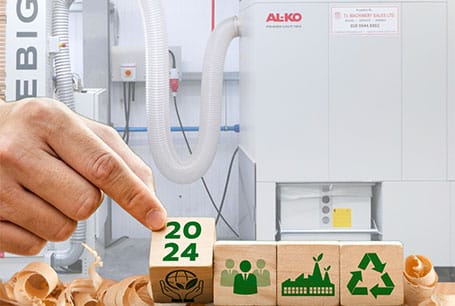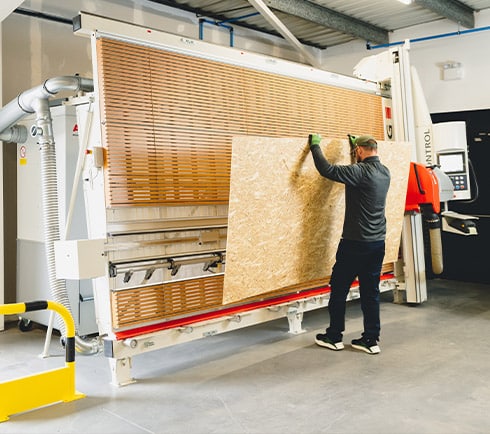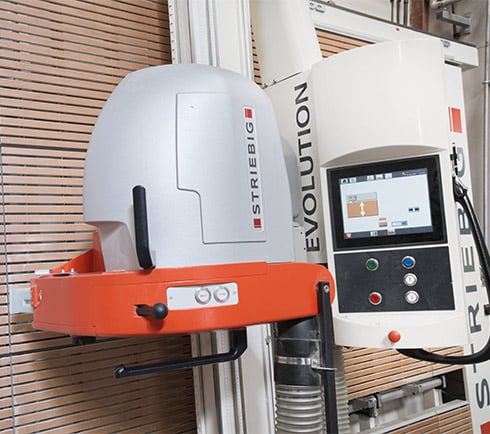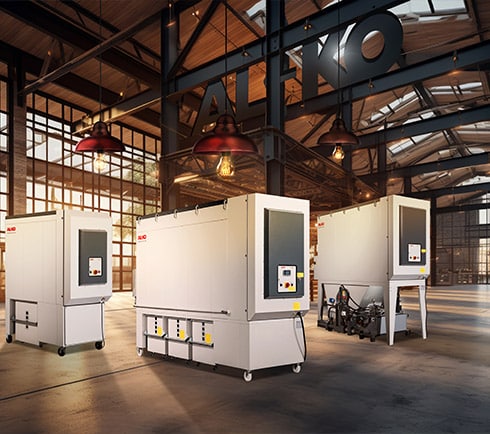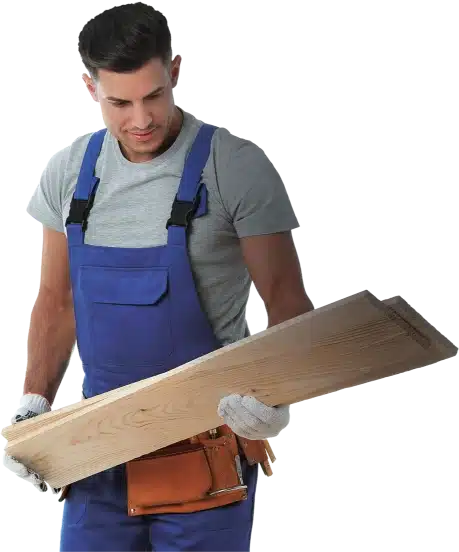Eco-Friendly and Sustainable Woodworking
Sustainability is a key focus for the woodworking industry, with every aspect of purchasing and production coming under scrutiny. For a new generation of workshop and joinery owners, creating an eco-friendly business is an increasingly important goal.
Dust extraction units, often the largest consumers of electricity in woodwork factories, can account for up to 40% of total energy costs. In a world where sustainability is key, this presents a real opportunity for woodworking businesses to not just comply with legal requirements, but actively reduce their carbon footprint and improve long-term sustainability.
By choosing the right dust extraction system, businesses can make substantial strides in improving energy efficiency. It’s not just about the dust extractor itself; better dust extraction leads to more efficient woodwork machinery, resulting in reduced maintenance costs and enhanced sustainability across the entire workshop.
How energy efficient is my dust extraction system?

Where do you start? It’s easy to look at motor size when looking at new machinery, but with dust extraction, it is more important to focus on overall performance, particularly when energy costs are so high. Look for high-spec dust extraction units that focus on energy efficiency, because the right system can see that eyewatering 10% falls to as little as 2%, highlighting that incorporating a sustainable approach to purchasing choices can pay real dividends.
Optimised fan housing and highly advanced IE3 or IE4 motors with around 97% energy efficiency are where the real savings in energy will be seen. And that’s just the start, when you add air circulation, filtration, the impact of ducting and waste removal, it becomes clear that to reduce energy consumption and improve sustainability, dust extraction is an ideal place to start.
How can I reduce dust extraction energy costs?
Dust extraction is all about moving and filtering air, so how your extraction unit achieves this and the knock-on effect on workshop temperature is where the real focus on energy savings should be. With the wrong dust extraction, the temperature will drop, and more energy is required, so you will be wasting both energy and money.
With the best extraction units, the warm, filtered air will remain in the room, significantly reducing energy wastage and in many cases 100% of that warm air can be recirculated back into the space, reducing the dependency on additional heating and creating a sustainable heat source when needed.
How important is dust extraction ducting?
Ducting is a critical and often overlooked factor in optimising the energy efficiency of your dust extraction system, so it’s worth considering a review of your current ducting. Multiple pick-up points located too close together, excessive elbows for elevation changes, incorrect duct size and uninsulated external ducting are just some of the areas that can negatively impact efficiency and increase energy consumption.
If you are looking at upgrading your current dust extraction and filter system, work with a manufacturer or supplier that already focuses heavily on energy efficiency. This way you can be certain that a comprehensive look at current and future ducting will improve energy efficiency and add further flexibility to your sustainability plan.
Which is the best dust extraction filter energy efficiency?
Filter efficiency is a key criterion for any dust extraction solution, and units that use antistatic polyester needle felt class M filters will provide longer life, higher levels of filtration efficiency and better air permeability, all combining to optimise machinery performance and reduce energy consumption.
In the most efficient dust extraction units, you should expect filter cleaning systems that use compressed air bursts to remove the dust that routinely attaches to the filters. Using around 1/7th of the compressed air routinely required and maintaining filters at high levels are features that can make a real impact on meeting sustainability goals.
Are there automated ways to save energy in a large workshop?
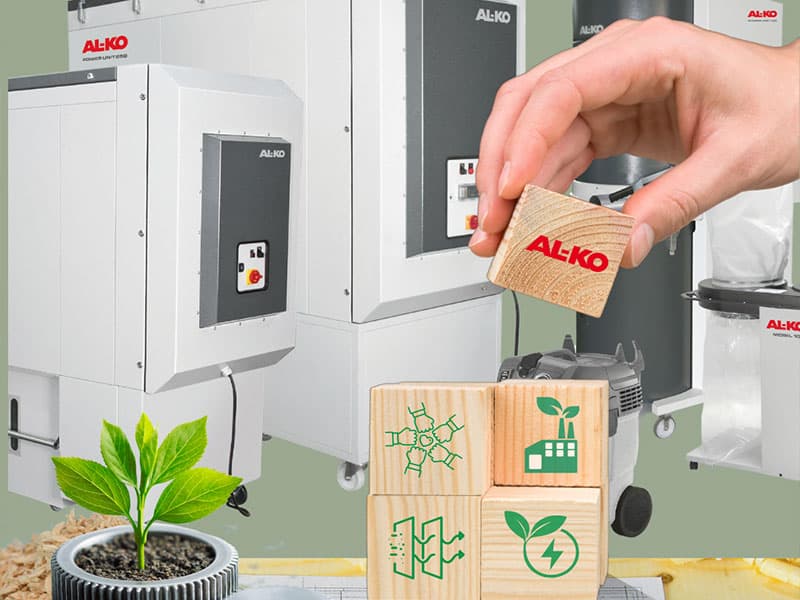
Choosing a dust extraction system that allows for the addition of automatic machine start detection, shut-off gates with automatic activation and demand-driven control via frequency converters means that extraction is activated when necessary, so the fan only produces the required flow, increasing the life of the filter and saving energy – all helping you to achieve increased sustainability and reduce energy wastage.
How can I choose a dust extraction system with sustainability in mind?
If you want to improve sustainability in your woodwork and joinery workshop, you need to think long-term. Durability and longevity go hand in hand with sustainability so investing in the right dust extraction system is key.
By choosing respected brands with high build quality, you can be sure that dust extraction units are built to withstand the robust demands of a busy workshop. With a reliable high-spec dust extraction system, you will get fewer breakdowns, more efficiency and a longer service life, all reducing environmental impact.
Sawdust: From Waste to Resource
Are there effective ways to maximise the potential of sawdust?
Whilst there are immediate benefits of improved energy efficiency, responsible waste management of sawdust is an equally important factor in improving overall sustainability.
In the right circumstances, sawdust can become a valuable resource, creating renewable energy to be used within the business, or providing the opportunity for additional profit. Equally, poor or unnecessary waste removal can harm the sustainability goals of the eco-friendly workshop.
Careful consideration of what, when and how sawdust waste is managed and disposed of provides a real opportunity for joinery shops to improve sustainability by reducing energy consumption and waste disposal requirements.
How can we improve waste management in the woodwork shop?
It’s easy to create considerable volumes of sawdust in a busy workshop, so waste management should be high on the agenda when looking to improve sustainability. High volume equates to increased removal requirements and costs, so compacting sawdust and reducing volume makes sense.
By installing an efficient briquette maker to work alongside your dust extraction system, waste volume can be reduced by as much as 90%. Less volume means less to collect, immediately reducing the costs of collections and the negative impact of transportation and logistics requirements.
Can we create renewable energy with sawdust waste?
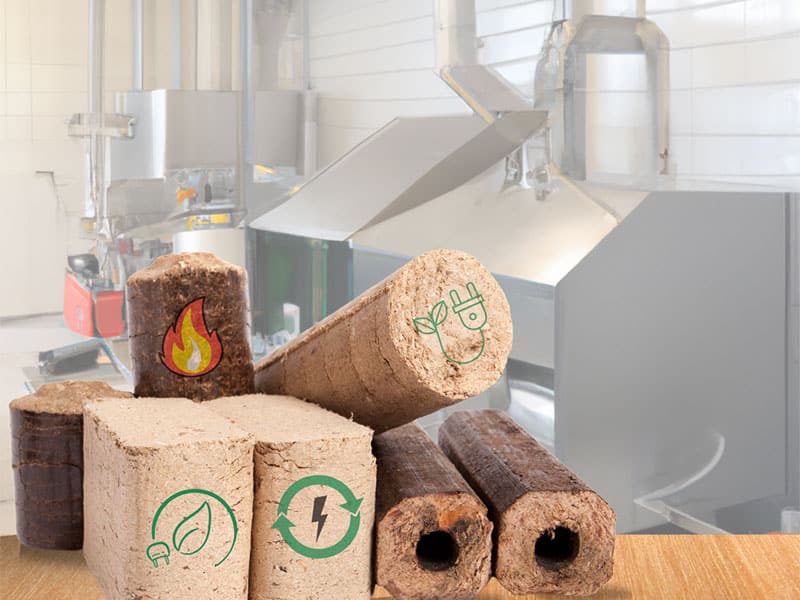
Installing a briquette maker means you can repurpose sawdust waste to create a renewable energy source for your workshop or home. Briquettes have a higher calorific content than logs, so you can significantly reduce the cost of heating and waste management by processing your waste and using it to fuel an independent heating system.
If biomass heating isn’t an option right now, you still generate profit by supplying briquette logs to local users. It’s a win-win scenario that improves sustainability, maximises profits and reduces dependency on external waste management.
Can sawdust and waste management be part of a sustainable workshop policy?
Turning sawdust into a product that benefits another industry or making it available as a local resource, can become an important part of your commitment to sustainable practice and could reduce your overall operating costs.
Much depends on how much sawdust waste you produce, and whether it can be turned into products with marketable value or a free resource that benefits others. There are many creative ways to reduce the dependence on waste services, from gardening and landscaping to the equestrian and pet bedding market. An imaginative look at waste management can help you and other local businesses to reduce carbon footprint.
The future of dust extraction: a shared responsibility
With an increasing focus on sustainability in the woodworking industry, adopting eco-friendly practices is more than an increasing requirement, it’s a responsibility we all share. Sustainable choices in woodworking are not only good for the environment but also the long-term success of businesses.
With considered machinery choices, we can reduce energy consumption. This, alongside responsibly managing waste material, woodworking workshops and factories can actively participate in creating a greener and more environmentally conscious industry.
